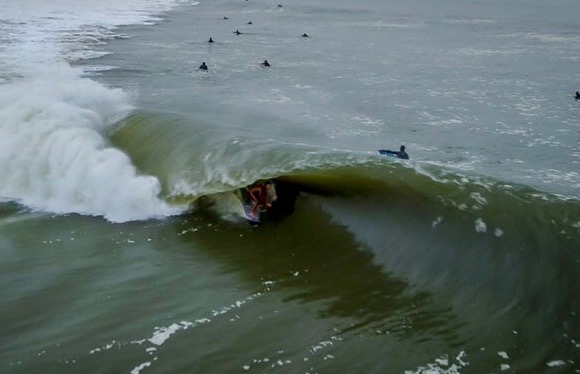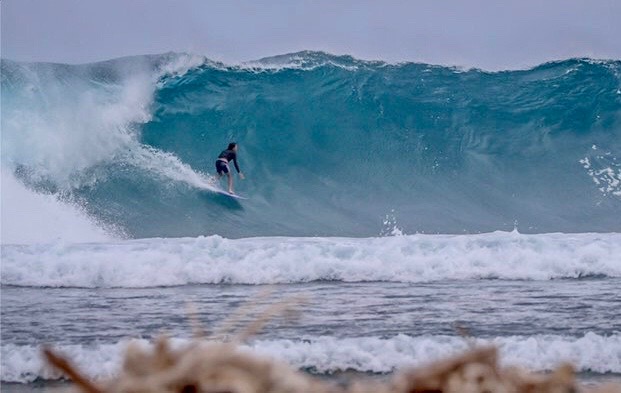Can You Chase The Same Swell From Namibia To Desert Point?
Peru’s Jonathan Gubbins proves that yes, yes you can.
We’ve all heard stories of surfers trying to, and in a few cases even succeeding at, catching quality surf from the same swell in two vastly distant locales.
Most famously, Dave ‘Rasta’ Rastovich and Craig Anderson achieved this trans-continental voyage on the Code Red swell of 2011, surfing waves from that same diabolical blob between Tahiti, Mexico, California, and Alaska.
Taylor Steele captured their entire journey in the film This Time Tomorrow, the trailer of which you can see below.
Recently, Peruvian surfer Jonathan Gubbins attempted a similar feat, but this time across two oceans rather than one.
Here’s how it went:
Jonathan Gubbins first flew to Africa for the June pulse at Namibia’s Skeleton Bay—the same swell that saw Brett Barley and Koa Smith get coned off their gourds (again), and that was so big it actually closed out the bay.
Unsatisfied with his harvest from the swell of the decade, Gubbins set up camp in Namibia, staying at a friends house for an entire month before the next swell.
“I was there almost 30 days, and I surfed only three of them,” Gubbins confessed to Stab.
You might be wondering what Gubbins did he did in the downtime.
“My wife came for two weeks—she left our kids at home in Perú,” Gubbins explains. “We did a road trip across Namibia, just seeing all the animals and experiencing the dunes in the Sossusvlei.
“Skeleton Bay aside, Namibia is an incredible country.”
Finally, after a month-long slumber, a new Atlantic Ocean swell reared its head. Gubbins called in some Peruvian tube reinforcements—Gabriel Villaran and Miguel Tudela—and milked the Namibian point from sun-up to sun-down.
While this swell wasn’t quite as impressive as the first, size-wise, Gubbins had a better command of the lineup and jagged several submarine caverns.
“Skeleton Bay is definitely my favorite, and the best, wave in the world,” he says. “There’s nothing like it.”

The reason the second swell was smaller than the first is that it took a more southerly track across the Atlantic, meaning that instead of running into Africa’s southern tip, the storm made its way around the Cape of Good Hope and into the Indian Ocean, where infinite world-class waves reside.
With his eyes still bloody from a 12-hour African marathon, Jonathan checked the swell charts and did the only logical thing: he booked a one-way flight to Denpasar, Bali ($1,000 USD), with plans of landing in the Indonesian surf mecca and catching the six-hour ferry to its neighbor island, Lombok.
About one week and 10,000 km later, Gubbins was dancing along the reef at Desert Point, waiting for the sets to subside so he could sprint past the impact zone and into the lineup. Unsurprisingly, the same front-footed approach that drove Gubbins to double-digit tubes in Africa led to similar success in Indo.

“The idea is to get the best barrels at these spots. That is the job,” Gubbins, who is practically the Billabong equivalent of Bruno Santos, told Stab. “But surfing Skeleton and Deserts on the same swell is unreal. A dream come true.”
Where did you get the best waves? we asked.
“Definitely Namibia.”
From the viewer’s perspective, it may not be so clear, but keep in mind that Skeleton Bay is one of the most infamously difficult-to-film surf spots in the world, so it goes without saying that some of Jon’s best rides likely went undocumented (especially since he wasn’t using a GoPro, which is pretty core).
And which would you rather surf, Skeleton or Deserts?














Comments
Comments are a Stab Premium feature. Gotta join to talk shop.
Already a member? Sign In
Want to join? Sign Up